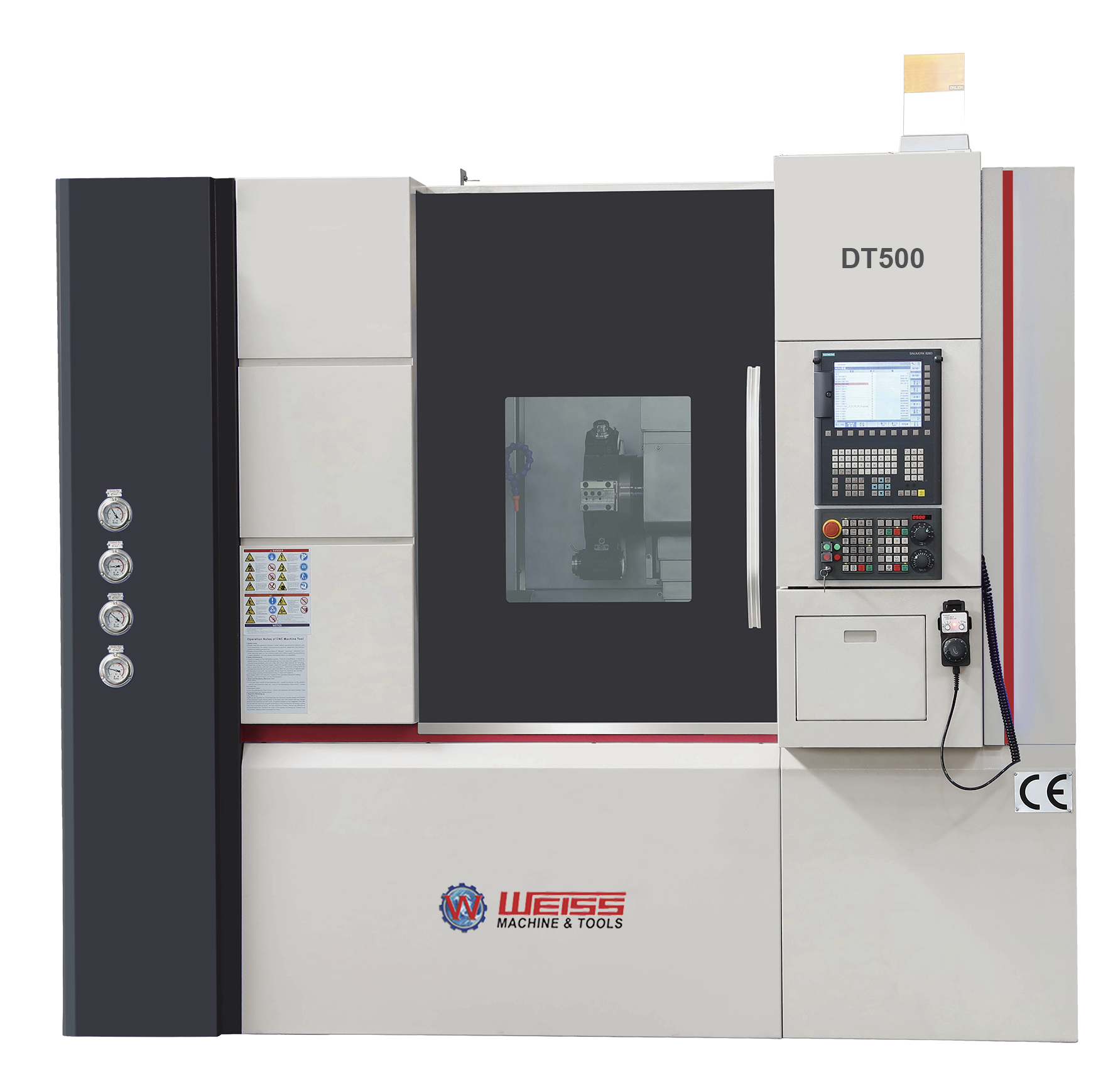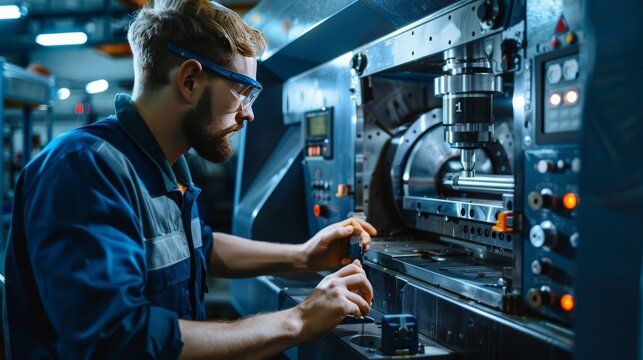
Get A Quote
What are the 3 Main Operations Used in CNC Turn Mill Machining Centers?
In the evolving landscape of modern manufacturing, versatility and precision are paramount. The integration of multiple machining operations into a single system has revolutionized production processes, leading to the development of CNC turn mill machining centers. These advanced machines combine the capabilities of both turning and milling, enabling manufacturers to complete complex parts in a single setup. But what exactly are the primary operations that make CNC turn mill machining centers so effective? In this article, we'll explore the best CNC turn mill machining centers, focusing on the three main operations used in these powerful machines.
Understanding CNC Turn Mill Machining Centers
CNC turn mill machining centers are hybrid machines that combine the functionalities of CNC turning and CNC milling. This integration allows manufacturers to perform multiple operations on a single machine, reducing setup time and increasing efficiency. The ability to transition seamlessly between turning and milling operations makes these machining centers ideal for producing complex components with high precision.
What is CNC Turning?
CNC turning is a machining process where the workpiece rotates while a stationary cutting tool shapes the material. This operation is primarily used to create cylindrical parts, such as shafts, rings, and bushings. In CNC turn mill machining centers, turning is one of the fundamental operations, allowing for precise shaping of round or cylindrical components.
What is CNC Milling?
CNC milling, on the other hand, involves the use of a rotating cutting tool to remove material from a stationary workpiece. This operation is used to create flat surfaces, slots, pockets, and complex geometries. In a CNC turn mill machining center, milling is combined with turning to produce parts with intricate details and multiple features.
The 3 Main Operations in CNC Turn Mill Machining Centers
CNC turn mill machining centers are designed to perform a wide range of operations, but three primary processes stand out as the most critical for producing high-quality components. These operations are turning, milling, and drilling. Let's delve into each of these processes to understand how they contribute to the functionality of CNC turn mill machining centers.
1. Turning
Turning is the foundational operation in any CNC turn mill machining center. During this process, the workpiece is held in place by a chuck and rotated at high speeds while a cutting tool removes material to achieve the desired shape. Turning is particularly effective for creating cylindrical or conical parts, such as shafts, pins, and rings.
One of the advantages of CNC turning within a turn mill machining center is the ability to perform secondary operations like threading, grooving, and parting-off without the need for additional setups. This capability enhances efficiency and ensures consistent quality across multiple components.
2. Milling
Milling is another critical operation in CNC turn mill machining centers. In this process, a rotating cutting tool moves along multiple axes to remove material from the workpiece. Milling is used to create flat surfaces, slots, and intricate features that are difficult to achieve with turning alone.
The best CNC turn mill machining centers are equipped with advanced milling capabilities, allowing for the creation of complex geometries and multi-faceted parts. By integrating milling into the machining center, manufacturers can achieve higher accuracy and reduce the need for multiple setups, streamlining the production process.
3. Drilling
Drilling is the third primary operation in CNC turn mill machining centers. This process involves the use of a rotating drill bit to create holes in the workpiece. Drilling can be performed at various angles and depths, depending on the design requirements of the component.
In a CNC turn mill machining center, drilling is often combined with other operations, such as tapping and reaming, to create threaded holes and achieve precise tolerances. The ability to perform drilling alongside turning and milling operations makes these machining centers highly versatile and capable of producing complex parts in a single setup.
Advantages of Using CNC Turn Mill Machining Centers
CNC turn mill machining centers offer numerous advantages over traditional machining methods, making them a popular choice in modern manufacturing. Here are some of the key benefits:
Increased Efficiency
One of the most significant advantages of CNC turn mill machining centers is their ability to perform multiple operations in a single setup. This reduces the need for manual intervention and minimizes setup times, leading to increased efficiency and faster production cycles. Manufacturers can complete complex components in a fraction of the time it would take using separate machines for turning, milling, and drilling.
Enhanced Precision
CNC turn mill machining centers are designed to achieve high levels of precision, thanks to their advanced control systems and automated processes. The integration of turning, milling, and drilling operations ensures that each part is machined to exact specifications, with minimal deviations. This level of precision is essential for industries such as aerospace, automotive, and medical, where accuracy is critical.
Cost Savings
By combining multiple operations into a single machine, CNC turn mill machining centers help reduce the overall cost of production. The need for fewer machines, less manual labor, and shorter setup times translates into significant cost savings for manufacturers. Additionally, the ability to produce high-quality components with minimal waste further contributes to cost-effectiveness.
Versatility
CNC turn mill machining centers are incredibly versatile, capable of handling a wide range of materials and producing components with varying degrees of complexity. Whether you're working with metals, plastics, or composites, these machines can adapt to different machining requirements, making them suitable for diverse industries.
Applications of CNC Turn Mill Machining Centers
CNC turn mill machining centers are used in various industries to produce a wide range of components. Here are some common applications:
Aerospace Industry
In the aerospace industry, precision and reliability are paramount. CNC turn mill machining centers are used to produce critical components such as turbine blades, engine parts, and landing gear components. The ability to perform turning, milling, and drilling operations in a single setup ensures that these components meet the stringent quality standards required in aerospace applications.
Automotive Industry
The automotive industry relies on CNC turn mill machining centers to produce a variety of components, including engine parts, transmission components, and suspension systems. The efficiency and precision of these machines allow automotive manufacturers to meet the demands of high-volume production while maintaining consistent quality.
Medical Industry
In the medical field, CNC turn mill machining centers are used to produce components such as surgical instruments, implants, and prosthetics. The high levels of precision and accuracy required in medical manufacturing make these machines indispensable for producing safe and effective medical devices.
Oil and Gas Industry
The oil and gas industry requires durable components that can withstand harsh environments. CNC turn mill machining centers are used to produce parts such as valves, fittings, and pumps. The ability to machine complex geometries with tight tolerances makes these machines essential for the oil and gas sector.
Conclusion
In conclusion, CNC turn mill machining centers represent the pinnacle of modern manufacturing technology, combining the essential operations of turning, milling, and drilling into one efficient machine. These centers not only enhance productivity and precision but also offer unmatched versatility across various industries, including aerospace, automotive, medical, and oil and gas. Their ability to handle complex geometries and produce high-quality components in a single setup makes them invaluable in today’s competitive market.
When it comes to investing in the best CNC turn mill machining centers, WEISS Machine is a trusted partner. With a strong focus on innovation, quality, and customer satisfaction, WEISS Machine provides cutting-edge solutions that cater to the diverse needs of modern manufacturers. By choosing WEISS Machine, you're not just investing in advanced machinery—you're investing in the future of your production capabilities. Let WEISS Machine help you achieve new levels of efficiency, precision, and success in your manufacturing endeavors.


